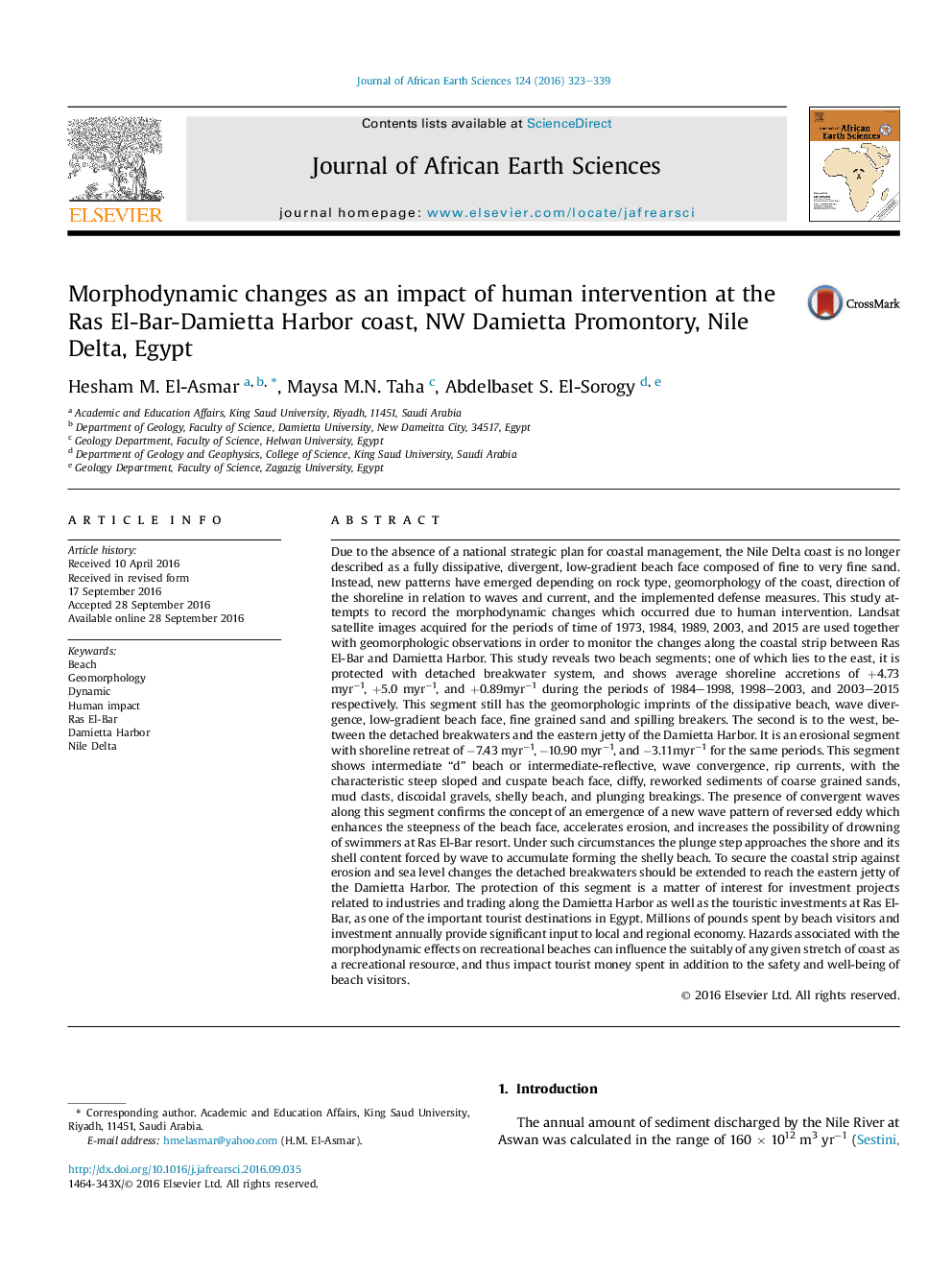| Article ID | Journal | Published Year | Pages | File Type |
|---|---|---|---|---|
| 4728151 | Journal of African Earth Sciences | 2016 | 17 Pages |
•The coastal zone between Ras El-Bar and Damietta Harbor is suffering human intervention.•Two distinct segments are distinguished.•One to the east, it is accreted segment, protected by detached breakwaters, and has a dissipative features.•The second to the west, it is erosional segment, has features of plunging reflective beaches.•Extension of the detached breakers is a must, in order to protect socio-economic projects along this coast.
Due to the absence of a national strategic plan for coastal management, the Nile Delta coast is no longer described as a fully dissipative, divergent, low-gradient beach face composed of fine to very fine sand. Instead, new patterns have emerged depending on rock type, geomorphology of the coast, direction of the shoreline in relation to waves and current, and the implemented defense measures. This study attempts to record the morphodynamic changes which occurred due to human intervention. Landsat satellite images acquired for the periods of time of 1973, 1984, 1989, 2003, and 2015 are used together with geomorphologic observations in order to monitor the changes along the coastal strip between Ras El-Bar and Damietta Harbor. This study reveals two beach segments; one of which lies to the east, it is protected with detached breakwater system, and shows average shoreline accretions of +4.73 myr−1, +5.0 myr−1, and +0.89myr−1 during the periods of 1984–1998, 1998–2003, and 2003–2015 respectively. This segment still has the geomorphologic imprints of the dissipative beach, wave divergence, low-gradient beach face, fine grained sand and spilling breakers. The second is to the west, between the detached breakwaters and the eastern jetty of the Damietta Harbor. It is an erosional segment with shoreline retreat of −7.43 myr−1, −10.90 myr−1, and −3.11myr−1 for the same periods. This segment shows intermediate “d” beach or intermediate-reflective, wave convergence, rip currents, with the characteristic steep sloped and cuspate beach face, cliffy, reworked sediments of coarse grained sands, mud clasts, discoidal gravels, shelly beach, and plunging breakings. The presence of convergent waves along this segment confirms the concept of an emergence of a new wave pattern of reversed eddy which enhances the steepness of the beach face, accelerates erosion, and increases the possibility of drowning of swimmers at Ras El-Bar resort. Under such circumstances the plunge step approaches the shore and its shell content forced by wave to accumulate forming the shelly beach. To secure the coastal strip against erosion and sea level changes the detached breakwaters should be extended to reach the eastern jetty of the Damietta Harbor. The protection of this segment is a matter of interest for investment projects related to industries and trading along the Damietta Harbor as well as the touristic investments at Ras El-Bar, as one of the important tourist destinations in Egypt. Millions of pounds spent by beach visitors and investment annually provide significant input to local and regional economy. Hazards associated with the morphodynamic effects on recreational beaches can influence the suitably of any given stretch of coast as a recreational resource, and thus impact tourist money spent in addition to the safety and well-being of beach visitors.
